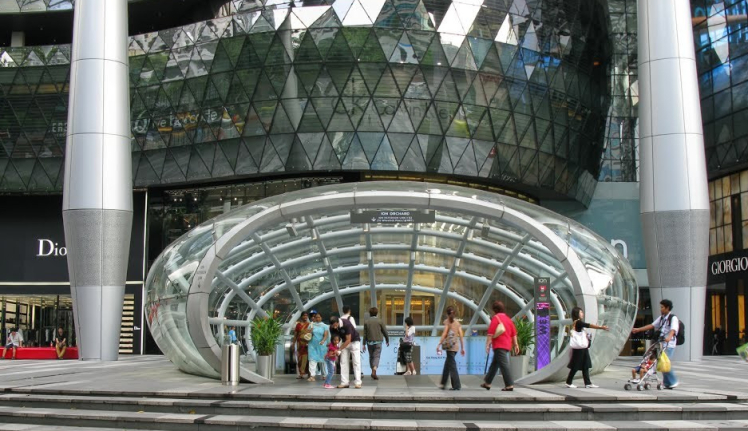Initiatives are leading actions, such that a design initiative is the beginning of an action that sets a design plan into motion for a certain purpose. This could be to achieve a certain goal or create some sort of impact in a contextual sense.
Strictly focusing on the theme of heritage, this post would explore a design initiative that deals with the challenge of heritage. Many would interpret ‘heritage’ to be either tangible or intangible. Examples being from property, historical sites, and food to language, and tradition respectively. All of which are inherited in some way from the past. However, the idea of heritage is essentially a symbol, such that “how and what we value in the past says something about how we see ourselves as a community today and how we project ourselves into the future” (Ien, 2001).
Therefore, if heritage is so highly valued then what might the challenges be. To simply answer this, Ien Ang, a Professor of Cultural Studies, metaphorically depicts history to “be a prison-house”. Thus, ‘heritage’ can be quite restrictive as the present is constantly at change but the community is chained down by their history. Aspects that resonate most with the challenges of heritage would be its conservation and the question of authenticity.
The design initiative on the underground space use in Singapore approaches the challenge of conserving heritage such that not only is heritage ‘preserved’ and ‘saved’ but is ‘built’ and ‘created’ through this proposal (Ien, 2001). As Singapore is a highly populated country with continual economic growth, it “lacks land space for development” (Yingxin, 2016). While being able to conserve monuments and heritage sites, a counteractive measure taken to develop new sites without knocking down the old is the use of underground space. Singapore traditionally tackled this challenge with high-rise buildings and land reclamation but this has been reaching its limits. Thus, a new idea was necessary. Driven by the need to cater to a growing population and economy, while lacking land, a design initiative was sprouted from underneath.
Not the freshest idea but definitely a resourceful one, Singapore’s initial and main use of underground space has been for transport systems (Yingxin, 2016). While it is a norm that there is some basement construction for shopping and parking purposes in the city areas, the idea of a shopping space purely built underground was not. To introduce this, many countries including Singapore has created an interconnected space through the transport systems to shopping areas. However, shopping malls have continually expanded underground in Singapore to their advantage. An example being ION Orchard, a mall in Singapore which is mainly underground.
 (MRT entrance at ION Orchard, Singapore, 2013).
(MRT entrance at ION Orchard, Singapore, 2013).
With many parts of the country being multi-layered with famous underground networks such as the Marina Coastal Expressway which runs 20 meters under the seabed at its deepest point (Marina Bay Sands, 2017), Singapore continues to strive with this design. While this underground system dealt with the challenge of conserving heritage, it has also continued to expand its borders. Twenty-five meters underground lies the Marina Bay Sands district cooling network which is the largest in the world. This network is able to replace traditional air-conditioning systems with less of the energy cost, making it a sustainable practice.
(Watch the video below for more information).Starting as one idea of this design initiative, it has now lead to much more in which present Singapore will be able to refer to as their heritage, which has been ‘built’ and ‘created’, in the future. Furthermore, the future development of the underground space in Singapore has become a long-term economic strategy and is structured as part of the urban sustainability (Yingxin, 2016). Overall, the use of this space has become an economic imperative that is beneficial for the societal and urban development of Singapore while being able to conserve heritage sites and monuments.
Danielswalsh. 2005. Futuristic Train Station. [ONLINE] Available at: <https://www.trekearth.com/gallery/Asia/Singapore/Central/Southern_Islands/photo362370.htm>.
Ien Ang, ‘Intertwining Histories: Heritage and Diversity’ The Annual History Lecture, History Council of New South Wales, 24 September 2001, http://historycouncilnsw.org.au/wp-content/uploads/2013/01/2001-AHL-Ang.pdf
Marina Bay Sands. 2017. Exploring Singapore’s Underground. [ONLINE] Available at: http://www.marinabaysands.com/singapore-visitors-guide/things-to-do-in-singapore/underground-singapore.html#KhukWyGt81VVz32y.97.
MRT entrance at ION Orchard, Singapore. 2013. [ONLINE] Available at: <http://www.panoramio.com/photo/84519856#>.
Temasek Digital. 2017. Something cool is happening underground. [ONLINE] Available at: https://www.youtube.com/watch?v=A6sMNWF-byU.
Yingxin Zhou, Jian Zhao, Assessment and planning of underground space use in Singapore, In Tunnelling and Underground Space Technology, Volume 55, 2016, Pages 249-256, ISSN 0886-7798, https://doi.org/10.1016/j.tust.2015.12.018, http://www.sciencedirect.com/science/article/pii/S0886779815300869.
Advertisements Share this:




